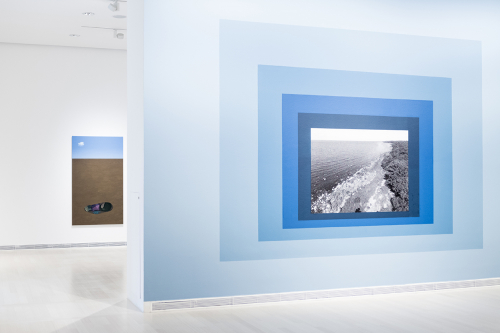Both Hungarian and Estonian languages are of Finno-Ugric origin, but the two groups of people that have spread far from each other over the millennia have followed different historical paths. Where do the Northern, Baltic traditions and Central Eastern European history and the common post-socialist experience meet in the 21st century?
What are the themes, problems and motifs of the art of the two countries that can be paralleled? What makes modern states, and what is the role of language and culture in this? What is the ideal state or citizen like? What is the role of art and the artist in today's consumer society? How can the future be predicted in the current state of turmoil and crisis?
The works of Dénes Farkas, Johnson & Johnson, Flo Kasearu, Marko Mäetamm, Marge Monko, Tanja Muravskaja, Kristina Norman and Kaido Ole deal with the above issues, through which we can learn about Estonia's exciting contemporary art scene. The works of the selected eight artists are aligned with works that deal with similar themes, but from a Hungarian point of view.
Greetings by dr. Julia FABÉNYI Director of Ludwig Museum – Museum of Contemporary Art and Kristi KARELSOHN, Designated Ambassador of Estonia to Hungary
Opening talk by Krisztina SZIPŐCS, Curator of the exhibition
Exhibiting artists
BIRKÁS Ákos, FARKAS Dénes, JOHNSON and JOHNSON, Flo KASEARU, Marko MÄETAMM, Marge MONKO, Tanja MURAVSKAJA, NÉMETH Hajnal, NÉMETH Ilona, Kristina NORMAN, Kaido OLE, PUKLUS Péter, SOCIÉTÉ RÉALISTE, TEHNICA SCHWEIZ
Cooperating partners: Eesti Instituut; Temnikova & Kasela Gallery, Tallinn; Molnár Ani Galéria, Budapest
The exhibition is on view until January 6, 2019
Curator: Krisztina Szipőcs
Curator Assistant: Jan Elantkowski
The exhibition is dedicated to the centenary of the Republic of Estonia.

Related content

Related by Sister Languages. Estonian-Hungarian Contemporary Art Exhibition 28. September, 2018 – 6. January, 2019
Both Hungarian and Estonian languages are of Finno-Ugric origin, but the two groups of people that have spread far from each other over the millennia have followed different historical paths. Where do the Northern, Baltic traditions and Central Eastern European history and the common post-socialist experience meet in the 21st century?
